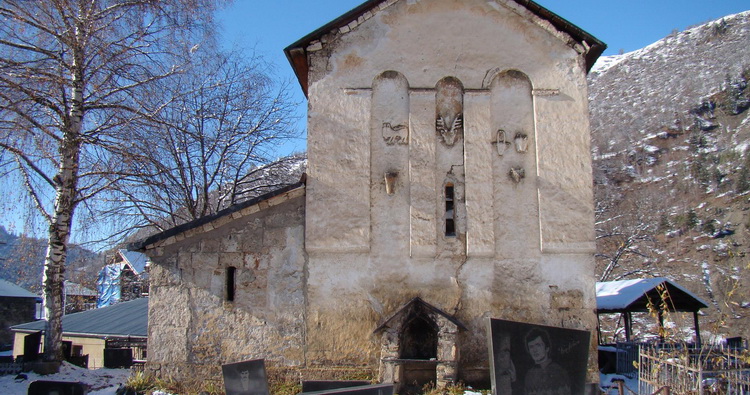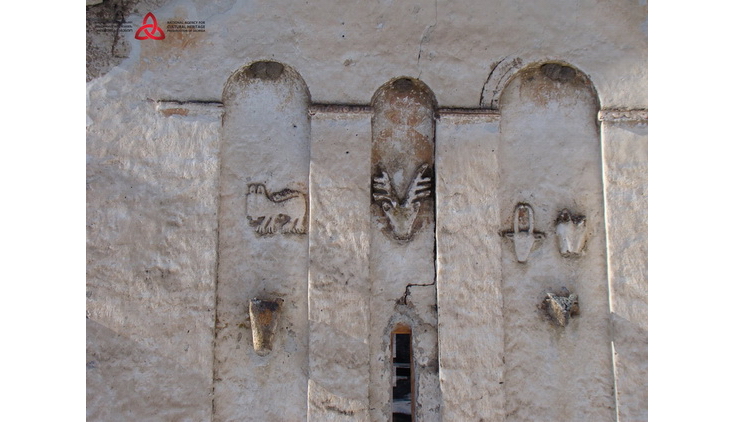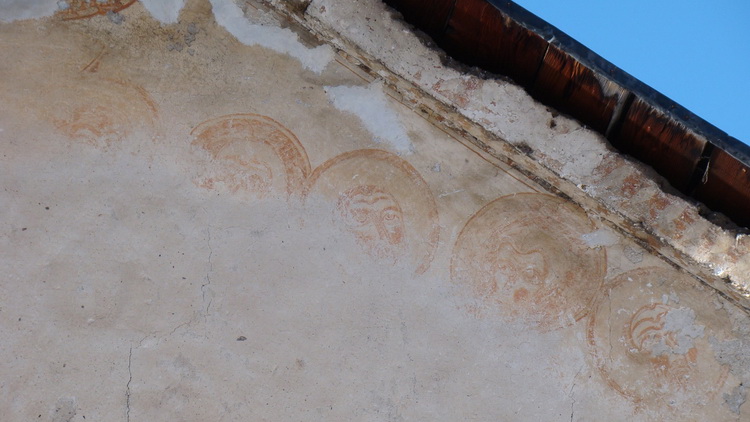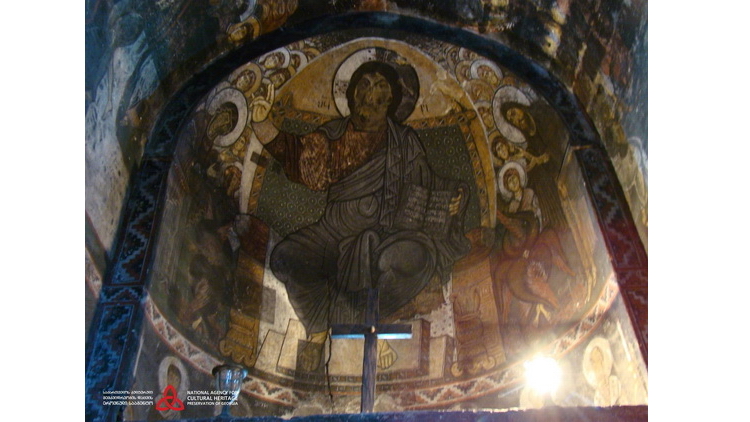See frescoes, sculptures of 10th century church in Svaneti province

The newly designated monument of cultural heritage is the central site of the small village. Photo: Georgia’s Cultural Heritage Agency press office.
A 10th century church in Georgia’s mountainous Svaneti province has become the latest site to be designated as a monument of cultural heritage of Georgia, in recognition of the notable sculptures and frescoes on its facade and interior.
The National Agency for Cultural Heritage Preservation of Georgia granted the status to the church, located in the village of Nakifari, this week.

A closer look at the sculptures of the church’s facade. Photo: Georgia’s Cultural Heritage Agency press office.
Situated in the Mestia Municipality village, the St George Church is perched 1600 metres above sea level.
Situated on an elevated spot and surrounded by a stone wall, it is a hall-type church built on an east-west axis.

Faded frescoes of the facade mark the monument’s distinctive look. Photo: Georgia’s Cultural Heritage Agency press office.
The structure is placed in the perimeter of the wall, within a recent graveyard.
It has entrances from the western and southern sides and features a tinplate roof. The church is considered one of the earlier examples of facade sculpting on sites of Christian worship in Svaneti.

A fresco on the ceiling of the church. Photo: Georgia’s Cultural Heritage Agency press office.
The sculptures on its facade are zoomorphic shapes of heads, with frescoes near the top of an outer wall.
Inside the monument, interior frescoes found on its walls and ceiling represent the renaissance period of the Svan school of painting.

A painting on a wall of the site designated after St George. Photo: Georgia’s Cultural Heritage Agency press office.
They are dated back to 1130 and credited to royal court painter Tevdore of the era.
Nakifari, the highland Svaneti province village where the church is found, is home to just 34 residents.
 Tweet
Tweet  Share
Share